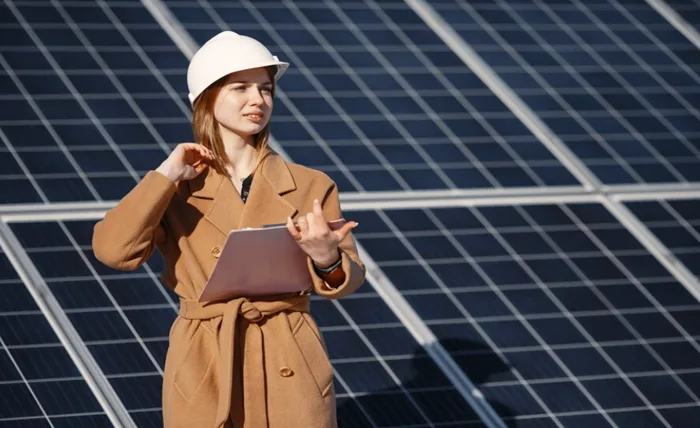Solar radiation refers to electromagnetic radiation or light energy emitted by the sun. While everyone receives light from the sun, the amount of radiation varies. Solar contractors use solar technologies to capture the radiation and convert it into electricity and other forms of energy. Here’s an overview of how solar panels work:
Solar Panels and Photovoltaic Cells
Two primary solar technologies exist today: photovoltaics (PV) and concentrating solar-thermal power (CSP). Photovoltaics is the technology solar contractors use in solar panels. CSP involves using mirrors to focus solar energy and produce heat that can be converted to electricity or stored for later use. The technology is used in large power plants. Each solar panel comprises small photovoltaic cells, also known as solar cells.
Photovoltaic cells in solar panels are sandwiched between layers of silicon or other semiconducting material. The top layer is seeded with phosphorus to increase the number of electrons and create a negative charge. Boron is used in the bottom layer to reduce electrons and create a positive charge. The combination results in an electric field at the junction between the two semiconducting layers.
When light photons enter the solar panel, they knock off electrons from the photovoltaic cells. The electric field pushes the free electron from the junction to the conductive plates on the side of the panel. Metal conductive plates then transfer the electrons to wires, allowing them to flow like other sources of electricity. Solar panels can feature thousands of stringed photovoltaic cells and produce DC electricity.
Other Components of a Solar Panel
Solar panels feature many other components, including tempered glass cover, EVA encapsulation foil, back sheet, junction box, and aluminum frame. The tempered glass cover is the outermost layer and protects the cells from dirt, dust, harsh weather, and other elements. Solar engineers use sturdy and clear glass to allow light to enter the panel. The panels also feature transparent ethylene vinyl acetate, EVA, sheets for encapsulation.
EVA encapsulation provides a laminated layer that holds the PV cells together. The sheets are durable and tolerant to extreme fluctuations in temperature and humidity. Back sheets are the outermost protective layer in the panel. They offer mechanical protection and electrical insulation. Aluminum frames provide structural strength to the solar panel. The material is strong, lightweight, and resilient against outdoor conditions.
A junction box is fitted at the back of the unit, providing a central location where cables interconnect with the panel. Solar panels also feature interconnectors used to connect different panels. The interconnectors are durable and weather-resistant. Silicon adhesives round up the solar panel components. Engineers use silicon because it creates a strong bond and provides superior resistance to moisture, chemicals, and weather conditions.
How Solar Panels Produce Electricity
Solar panels rely on the photovoltaic effect, first discovered by French scientist Edmond Becquerel. Edmond determined that light could increase electric current generation between two electrodes dipped in a conducting solution. His discovery paved the way for future developments, culminating in the invention of silicon PV cells that modern solar panels use. Here’s a breakdown of how solar panels produce electricity:
- Light photons from the sun enter the solar panel through a transparent protective glass covering
- The photons displace electrons from photovoltaic cells in the panel
- Displaced electrons travel through the internal electric field created by two layers of silicon semiconductors.
- The electrons move toward metal side plates soldered to the PV cells.
- Metal side plates transfer the electrons into wires, creating direct current, DC electricity
- The electric current moves through the cables to the junction box and interconnectors
- Electricity from the panel passes through a converter that produces alternating current, AC.
- The AC power is distributed to storage batteries, appliances, or distribution grids.
Working With Solar Contractors
Solar energy systems are renewable, eco-friendly, cost-effective, and sustainable. You can invest in solar panels to produce clean, green energy for your home, office, or business. Solar is cheap and relies on a free source of energy. You can significantly lower utility bills and save thousands of dollars annually. Make sure you work with reputable solar contractors to customize your installation so you can begin converting sunlight into energy.



